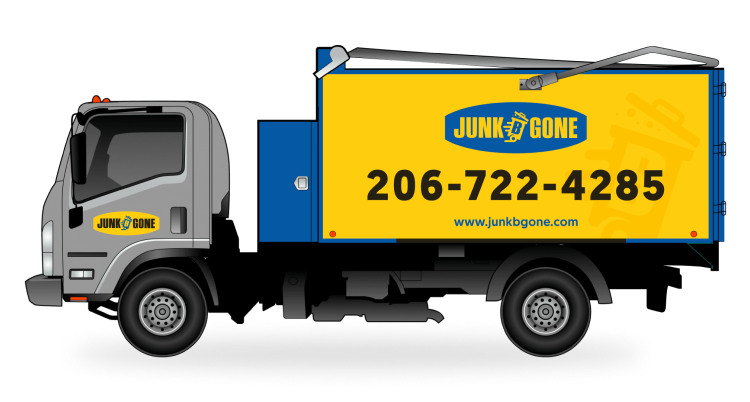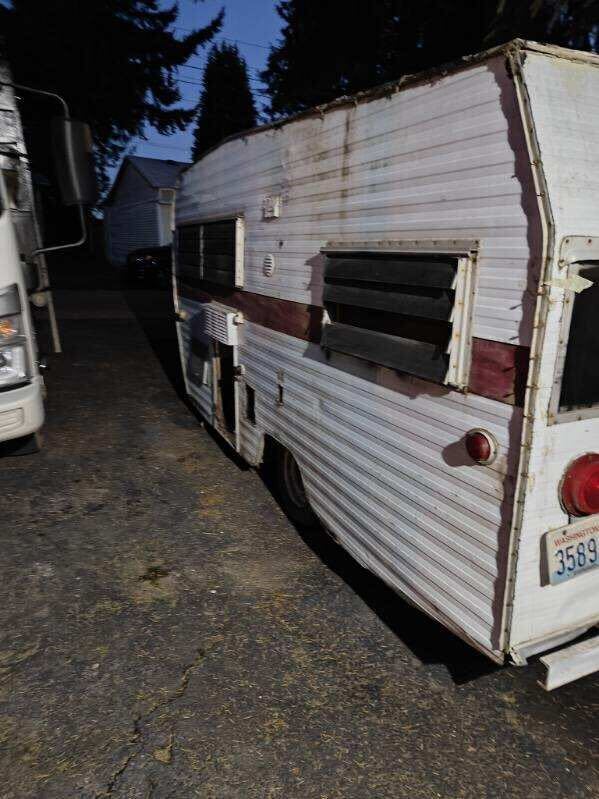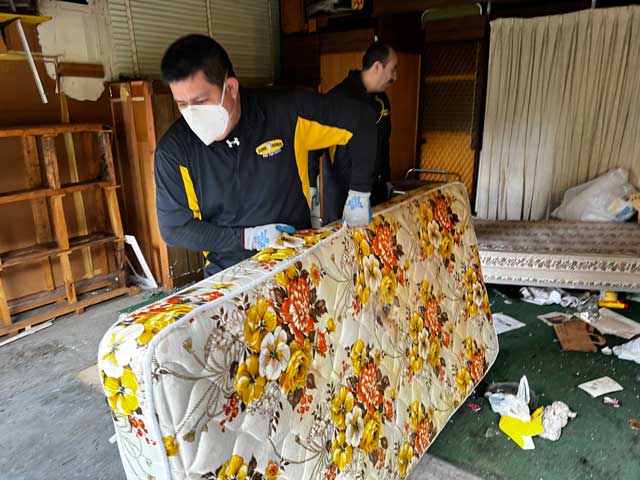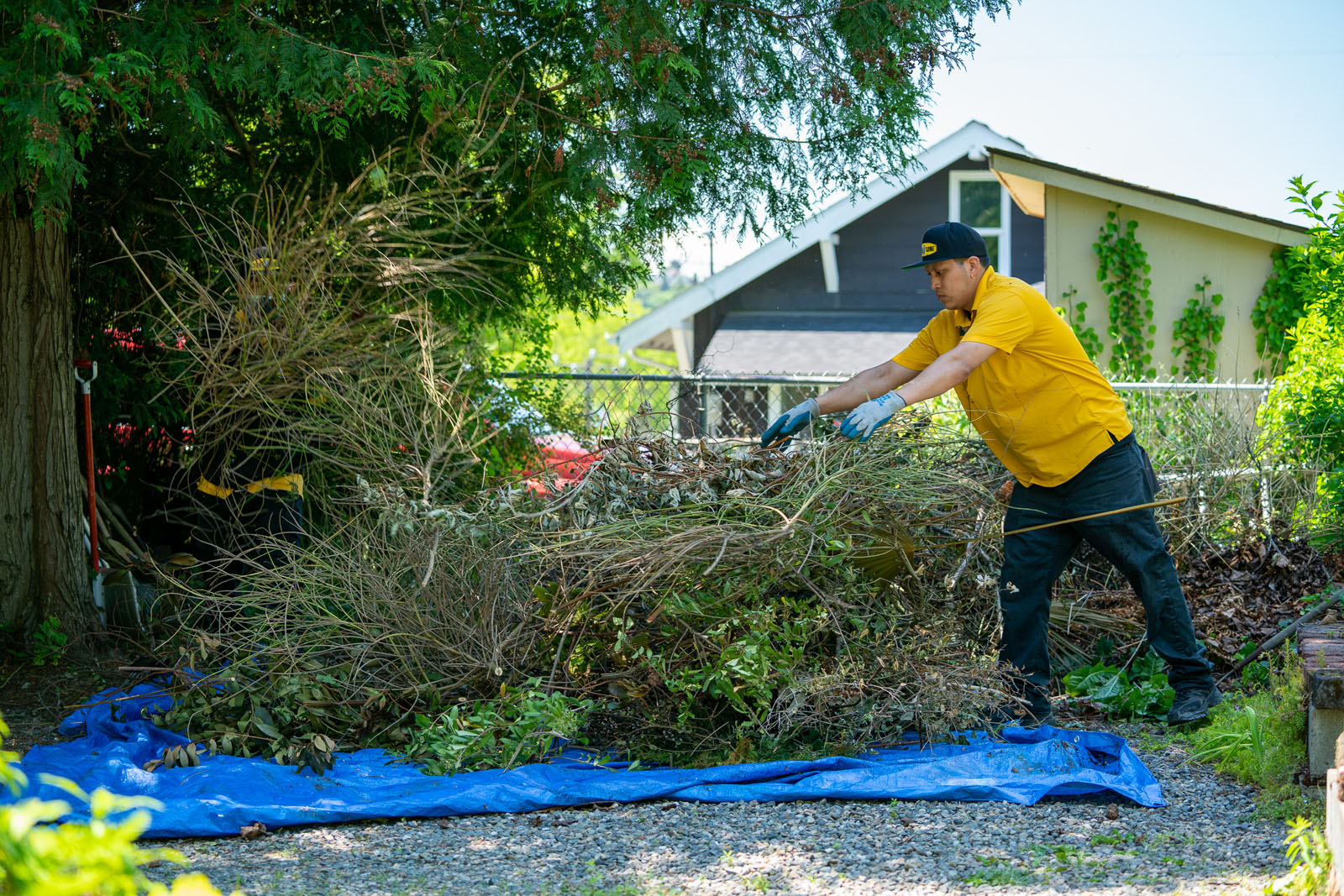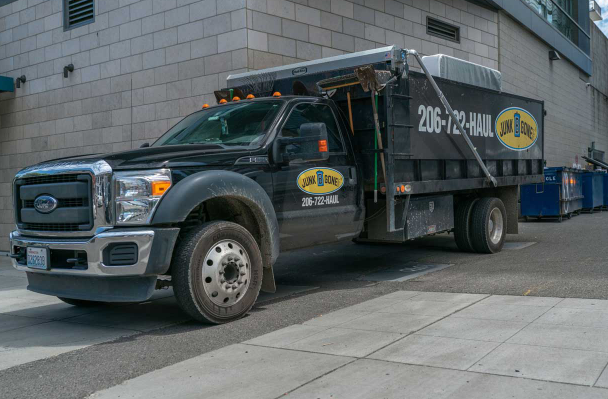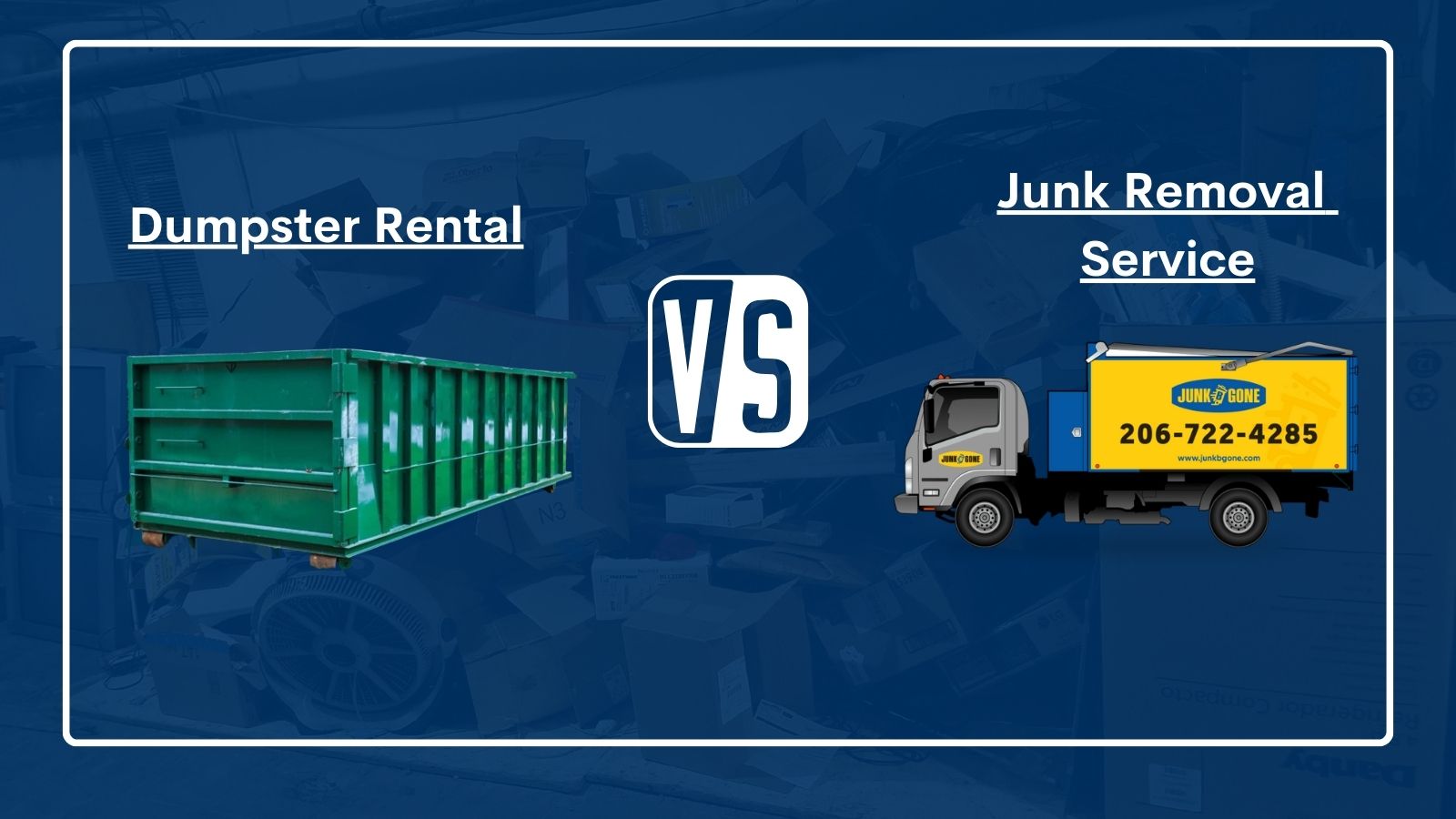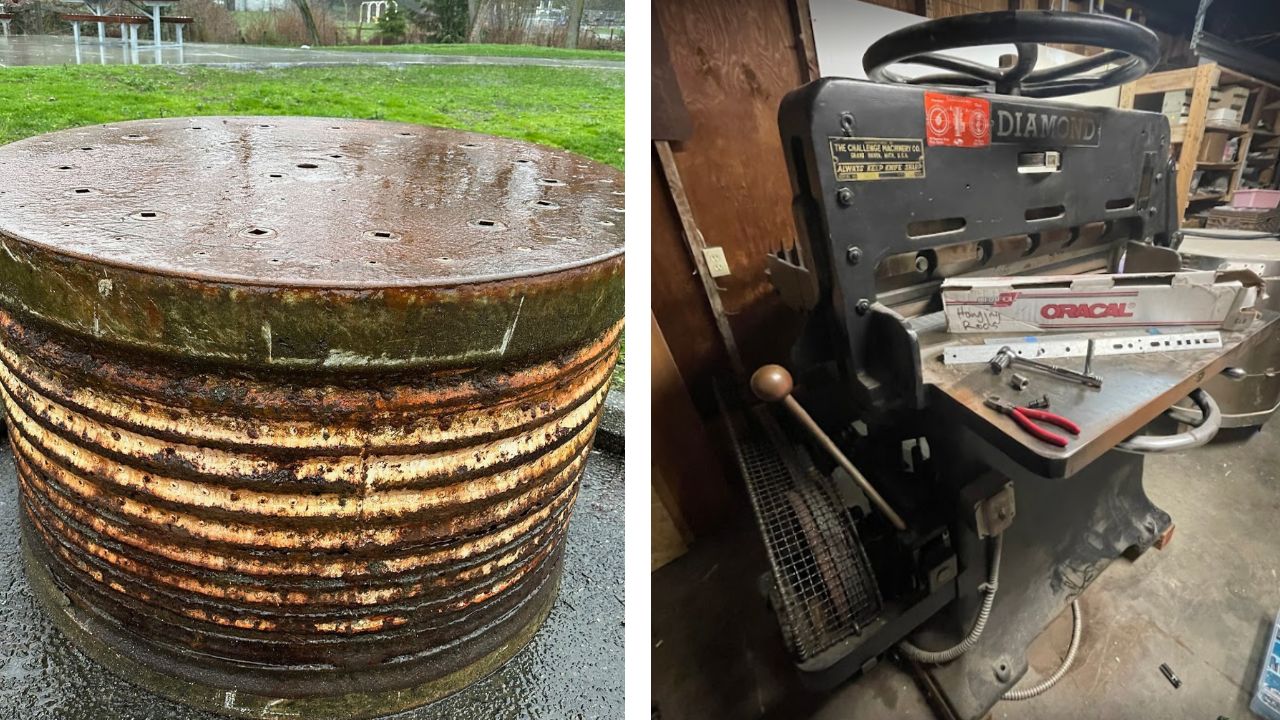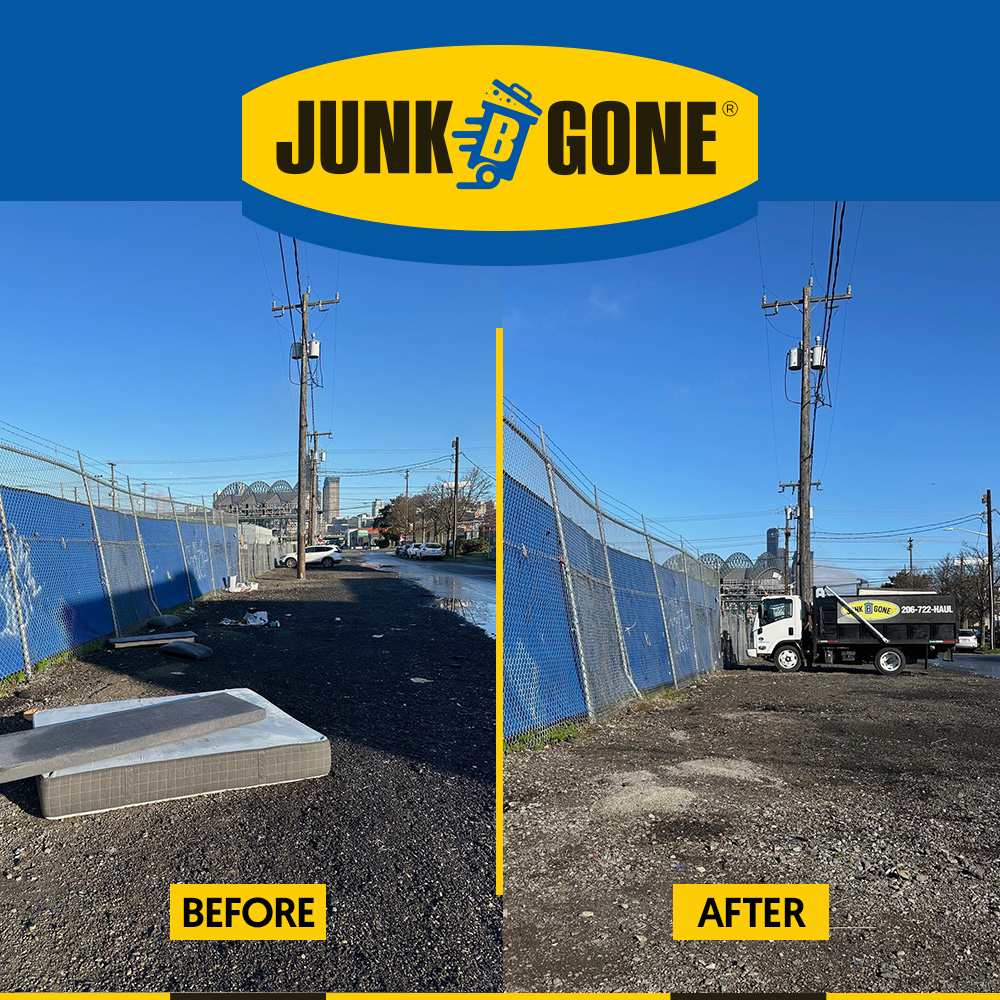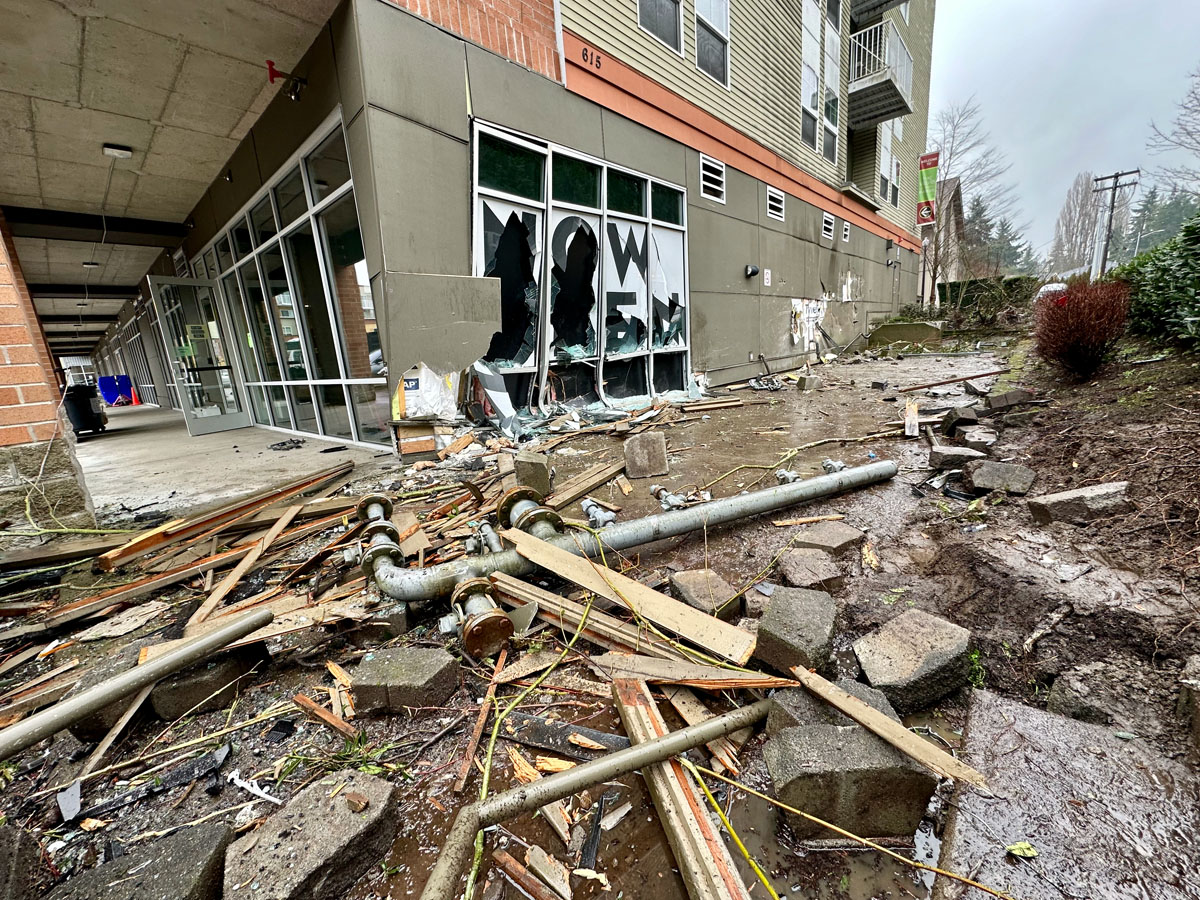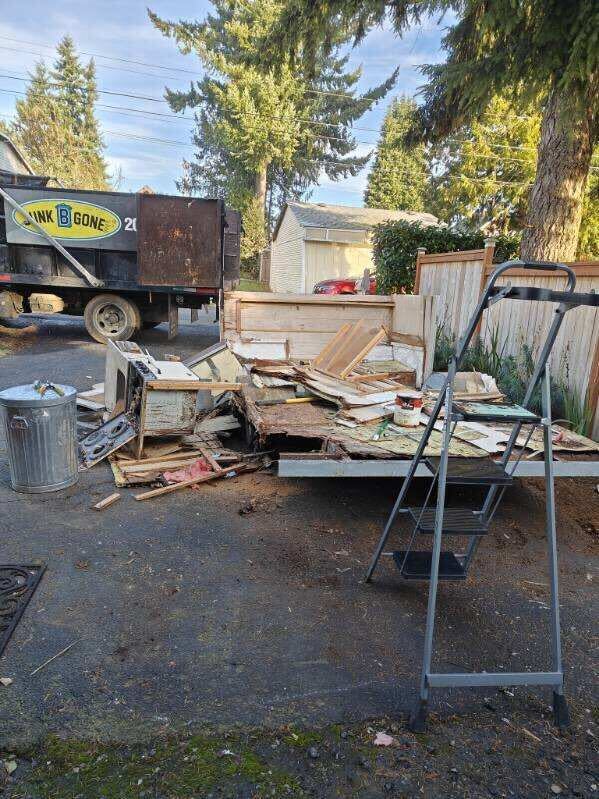Whether you’re a homeowner diving into a renovation or a contractor finalizing a new build, there’s a universal challenge that awaits: dealing with construction debris. This waste, which arises from both minor and major construction activities, tends to accumulate rapidly. It’s not just about the logistical challenges; there are significant environmental implications to consider as well.
Wether you’re building a new bathroom or a whole new house, understanding the nuances of construction debris removal becomes important. This guide is here to help, offering insights into eco-friendly and efficient ways to manage this waste. Our aim is to ensure your construction site or home remains safe and clutter-free, while adhering to environmental standards and local regulations.
The construction sector is often associated with generating substantial amounts of waste. From discarded materials to excess packaging, the volume of debris can be overwhelming. However, with the right knowledge and tools, managing this waste can be streamlined, benefiting both the project and the environment.
What constitutes Construction Debris?
Construction debris, often referred to as construction and demolition (C&D) waste, encompasses a wide variety of materials resulting from the construction, remodeling, or demolition of buildings and structures. This can include everything from leftover bricks and concrete to scrap wood and metal, along with packaging materials, drywall, insulation, and even nails and wiring removed during the demolition process.
Differentiating between hazardous and non-hazardous construction waste is crucial for proper disposal. Non-hazardous materials are generally those that don’t pose a significant threat to public health or the environment, such as concrete, wood, and metals. On the other hand, hazardous waste includes items like asbestos, lead-based paint, and certain types of treated wood, which require special handling and disposal to prevent harm to human health or the environment. Understanding these distinctions helps in planning effective and responsible waste management strategies.
Disposal Methods Based on Types of Construction Waste
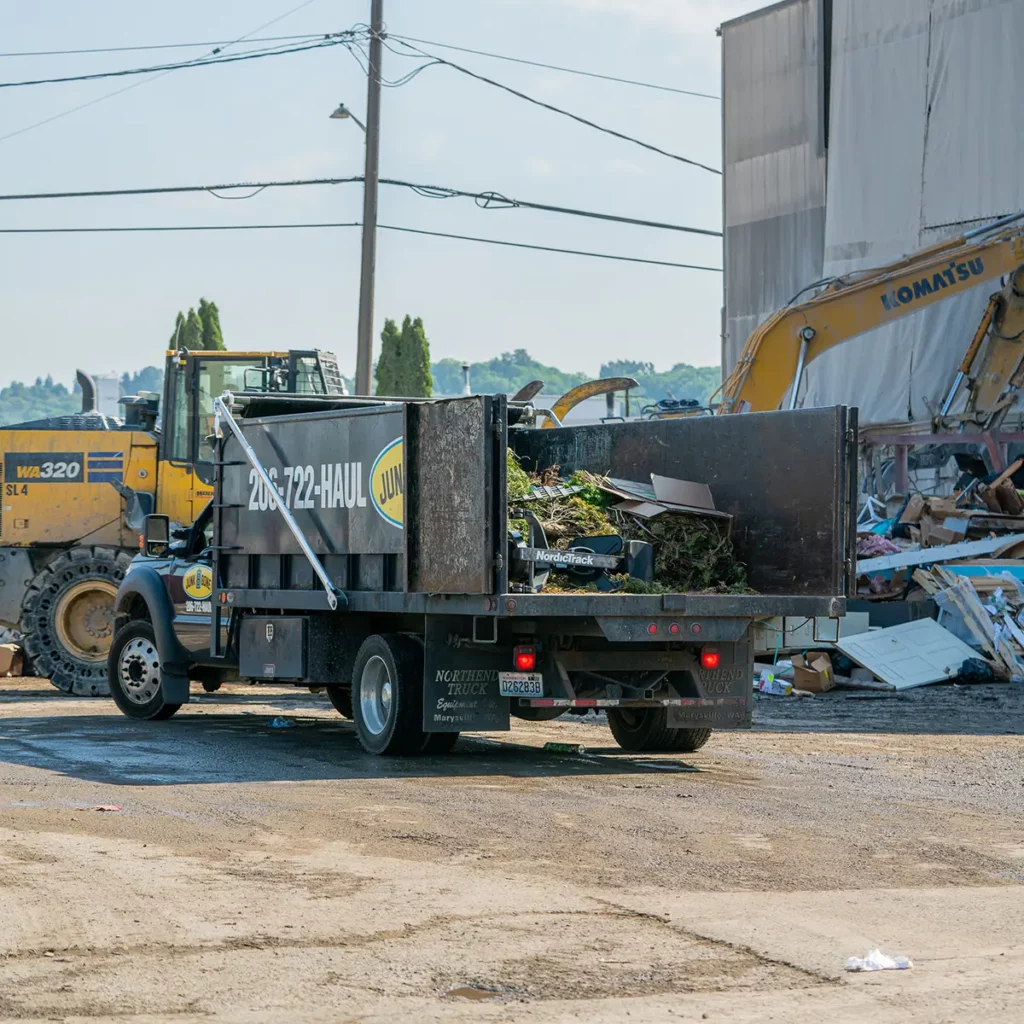
When addressing the disposal of construction waste, it’s critical to distinguish between hazardous and non-hazardous types. This differentiation significantly influences the appropriate disposal methods to protect both environmental and public health.
How to Dispose of Non-Hazardous Construction Waste
While the spotlight often shines on hazardous waste due to its risks, the bulk of construction debris is non-hazardous. However, it still requires proper handling and disposal. Effective management of non-hazardous construction debris not only ensures environmental safety but also aligns with regulatory standards. Here’s a comprehensive guide to handling this type of waste:
1. Segregation at Source:
- Initiate the Process On-Site: The first step in efficient waste management is segregating materials right at the construction or demolition site. This proactive approach facilitates easier recycling and diminishes contamination risks.
- Organized Collection: Allocate separate areas or bins for different materials such as metals, wood, and plastics. This organized collection streamlines the disposal process and enhances recycling efficiency.
2. Recycling and Repurposing:
- Embrace Recycling: A significant portion of non-hazardous construction materials, including wood, metals, and certain plastics, have the potential to be recycled. This not only conserves resources but also reduces the strain on landfills. Take your construction debris to local recycling facilities to ensure materials are processed correctly.
- Community Engagement: Sometimes construction debris like pallets, wood, and concrete can be upcycled and used again. Consider donating usable items to community projects, or other builds to give them a second life.
- Stay Informed: Familiarize yourself with local regulations or potential fees associated with construction waste disposal. This ensures compliance and avoids unforeseen expenses.
3. Hire a professional Junk Removal Service:
- Save the Stress: Professional Junk Removal Services (like us!) are pros at constructing debris removal. Weather you’re a small contractor, a DIY renovator, or a large building company, creating parterships with a local junk removal service can be a lifesaver. We can take a considerable amount of stress and pressure off a reno or build.
- Sort and Haul: Professional junk removal services will sort your debris for you, and recycle and what we can. We know how to dispose responsibly of each kind of material, saving you the time and research.
Should I Rent a Dumpster? You could consider renting a dumpster. As junk removers, call us biased, but we are not team dumpster. Dumpsters clog a street and annoy the neighbours. They discourage you from sorting your debris (because it all just ends up in one place- the dumpster). Hiring a junk removal service on the other hand is quick, efficient, tidy, and more affordable than a dumpster rental.
We hope these e guidelines can help you plan your next DIY project or professional demolition responsibly, reducing you environmental impact, even when handling large amounts of non-hazardous debris are on your hands. Eco-friendly disposal methods benefits the environment along with the reputation of the project and its stakeholders.
How to Dispose of Hazardous Construction Waste?

The presence of hazardous construction waste introduces a set of challenges that demand meticulous attention. These materials, if mishandled, can pose severe threats to both the environment and human health. To ensure the safety of all stakeholders, from construction workers to the surrounding community, it’s vital to adopt stringent disposal practices. Here’s a comprehensive guide to managing hazardous construction debris:
1. Identification and Labeling:
- Spot the Hazard: Before initiating any disposal or recycling processes, the first step is to accurately identify hazardous materials. This ensures that they are treated with the caution they warrant.
- Clear Labeling: Once these materials are identified, they should be labeled conspicuously. Proper labeling prevents accidental mishandling and ensures that hazardous waste doesn’t get mixed with non-hazardous materials.
2. Specialized Storage Solutions:
- Dedicated Containers: Store hazardous waste in containers specifically designed for this purpose. These containers should be leak-resistant and corrosion-proof, ensuring the safe containment of harmful materials.
- Isolated Storage: It’s crucial to keep these specialized containers separate from general waste storage areas. This segregation minimizes the risk of cross-contamination.
3. Engage with Experts:
- Certified Disposal Partners: Given the inherent risks of hazardous construction waste, it’s imperative to collaborate with certified disposal services. These professionals possess the necessary expertise and equipment to manage hazardous materials safely.
- Regulatory Compliance: Certified disposal services ensure that all hazardous waste is treated, stored, or disposed of in alignment with local regulations and global environmental standards.
Common Questions on Construction Debris Disposal
How can I dispose of construction debris?
Dispose of construction debris by renting a dumpster, hiring a professional junk removal service, or transporting it to a local landfill or recycling center, ensuring it adheres to local disposal regulations.
What are the costs involved in construction debris removal?
Costs vary based on volume, material type, and disposal method, ranging from rental fees for dumpsters to charges by professional removal services or specific fees at recycling centers and landfills.
Can construction materials be recycled, and how?
Yes, materials like wood, metal, concrete, and bricks can be recycled. Contact local recycling centers to understand their requirements and prepare materials accordingly for recycling.
What should I do with hazardous construction materials?
Hazardous materials must be handled carefully; contact local hazardous waste disposal services or your municipality for guidelines on safe disposal methods and locations.
How to rent a dumpster for construction waste?
Contact local waste management companies or dumpster rental services, provide details about your project, and choose the appropriate size and rental period based on their advice.
Are there eco-friendly ways to dispose of construction debris?
Yes, consider recycling, donating usable materials, and choosing services that follow environmentally responsible disposal practices.
What are the regulations for disposing of construction waste?
Regulations vary by location; consult your local environmental protection agency or waste management authority to understand specific rules and ensure compliance.
How to manage construction waste on a DIY project?
Plan ahead to minimize waste, segregate materials for recycling, reuse or donate when possible, and rent a small dumpster if necessary for the remaining debris.
Can I donate unused construction materials?
Yes, many organizations accept donations of new or gently used construction materials, such as Habitat for Humanity ReStores or other local construction material recycling centers.
Navigating Construction Waste Disposal with Responsibility
In the ever-evolving landscape of construction, waste management stands as a pillar of responsibility. Whether it’s non-hazardous debris or materials that pose potential hazards, understanding and implementing safe disposal practices is paramount. For Seattle, a city that prides itself on sustainability and community well-being, this is even more crucial. If you’re embarking on a construction project in Seattle and need expert guidance on waste disposal, Junk B Gone is here to assist. With our commitment to eco-friendly practices and a deep understanding of local regulations, we ensure that your construction waste is handled with the utmost care. Reach out to Junk B Gone today and play your part in building a cleaner, greener Seattle.

